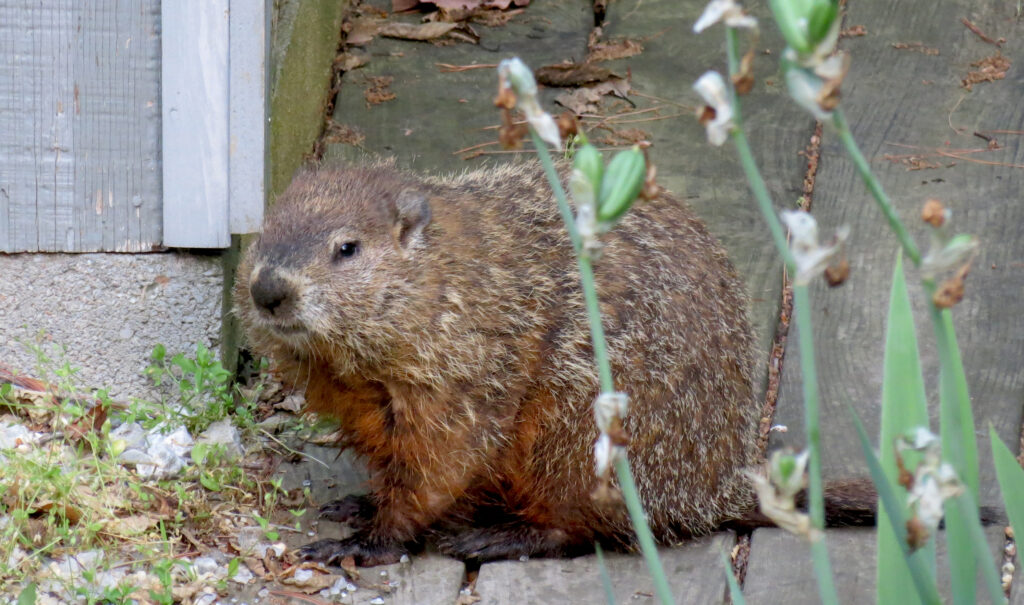Day of the Whistle Pig
Happy Groundhog Day! How much do you know about our resident whistle-pigs?
Groundhogs (Marmota monax) are large members of the squirrel family. They make extensive burrows which can sometimes have up to a dozen entrances. They are relatively tidy, and it often is easy to tell a groundhog den from a fox den by the state of litter outside the entrance. Their winter burrows are often in wooded area while summer burrows are in fields. While some folks do not appreciate their extensive burrows, the burrows are used by a number of other wildlife species after the groundhogs have moved on.

Groundhogs are some of the few true hibernators. They can drop their body temperature about 60 degrees F, and their heartbeat goes from about 80 bpm to 5 bpm! During their slumber, their body is so efficient that it only burns about 25% of their fat.
Interestingly enough, groundhogs in our area do temporarily emerge at this time of year. The emergence is not to predict the weather, rather, it is to find a new mate to shack up with before mating in early March. Why does it take them a couple weeks? Well, groundhogs are pretty antisocial, so it takes them a little time to reform their bonds to mate. The young will be born a month after mating, and the male will head back to his territory. By May, we will have plump, baby groundhogs out and about.
The origin of Groundhog Day has European roots. In Europe, farmers could predict timing of spring plantings based on when hibernators like badgers and hedgehogs emerged. When colonists came here, they looked to the groundhog as their substitute.
A few other fun facts about groundhogs:
- They can climb trees. They aren’t the best at climbing and sometimes lose their grip, but they can climb.
- They don’t chuck wood. So, we will never know how much a woodchuck can chuck. The English interpretation of the Algonquin word “wucack,” which means digger and is the likely origin of the woodchuck name.
- Their underfur is jet black and some melanistic or all black individuals have been documented.
- Groundhogs are chunky and low to the ground, so they can’t run very fast. In fact, their top speed is around 8 mph. So, their burrows are very important for their survival. Because of this, trapping and relocating groundhogs (if legal in your area) isn’t very humane. Placing them in a new area without their protective burrows and in another groundhog’s territory can be problematic.
- Their common name ‘whistlepig’ is from the whistle noise they make to alert other groundhogs. If you haven’t heard the whistle, check out the video below.
